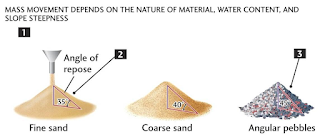Basic of Dissolution test
Basics of Dissolution
- Dissolution test is provided to determine compliance with the dissolution requirements where stated in the individual monograph for that particular dosage form.
- For dissolution of different dosage forms Particular dissolution equipment must be used as described in pharmacopoeial requirements.
Dissolution of Uncoated
Tablets, Plain Coated Tablets & Capsules.
Apparatus :-
- Apparatus mentioned in different pharmacopoeia–
- Apparatus – 1 & Apparatus – 2
- Individually test 1 tablet of the Dissolution calibrator, Disintegration type and 1 tablet of Dissolution Calibrator, Nondisintegrating type, according to operating conditions specified. The apparatus is suitable if the results are within the acceptable range stated in the certificate for that calibrator in the apparatus tested.
- Use the solvent specified in the individual monograph. If the dissolution medium is the buffer solution, adjust the solution so that pH is within 0.05 units of the PH specified in the individual monograph.
- Where a single time specification is given, the test may be concluded in a shorter period if the requirement for minimum amount is met. If two or more times are specified, specimens are to be withdrawn only at the stated times, within a tolerance of ± 2%.
- Place the stated volume of the dissolution medium (±1%) in the vessel of the apparatus specified in the individual monograph, assemble the apparatus equilibrate the dissolution medium to 37 ± 0.5°, remove the thermometer. Place 1 tablet or 1 capsule in the apparatus, taking care to exclude air bubbles from the surface of the dosage form unit, and immediately operate the apparatus at rate specified. Within the time interval specified, withdraw a specimen from a zone midway between the surface of the dissolution medium & the top of the rotating basket or blade not less than 1 cm from the vessel wall.
- If automated equipment is used for sampling and the apparatus is modified, validation of the apparatus is needed to show that there is no change in agitation characteristic of test.
- When capsule shell interfere with the analysis, remove the content of not less than 6 capsules as completely as possible, and dissolve the empty capsule shell in the specified volume of the dissolution medium.
- Proceed as directed above. Combine equal volumes of the filtered solutions of the 6 or 12 individual specimens withdrawn; use the pooled sample as the test solution. Determine the average amount of the active ingredient dissolved in the pooled sample.
- Unit sample: -
- The requirements for active ingredient dissolved from the units tested are confirm to the acceptance table. Continue testing through the three stages unless the result conforms at either S1 or S2. The quantity Q is amount of dissolved active ingredient; the 5%, 15% and 25% values in the table are the % of labeled content.
Acceptance Table
|
||
Stage
|
No.
Tested
|
Acceptance criteria
|
S1
|
6
|
Each unit is not less than Q ±5%
|
S2
|
6
|
Average of 12 units (S1+S2) is equal to or greater
than Q, & no unit is less than Q15%.
|
S3
|
12
|
Average of 24 units (S1+S2+S3) is Q
2 units are < Q-15%, no
unit < Q-25%.
|
- Pooled sample: -
- The requirements for active ingredient dissolved from the pooled samples tested are confirm to the acceptance table. Continue testing through the three stages unless the result conforms at either S1 or S2. The quantity Q is amount of dissolved active ingredient; the 5%, 15% and 25% values in the table are the % of labeled content.
Acceptance Table for a
Pooled Sample
|
||
Stage
|
No.
Tested
|
Acceptance criteria
|
S1
|
6
|
Average amount dissolved is < than Q ±10%
|
S2
|
6
|
Average amount dissolved (S1+S2) is equal to or
greater than Q + 5%.
|
S3
|
12
|
Average amount dissolved (S1+S2+S3) is equal to or
greater than Q.
|
Basic requirement for
design of dissolution apparatus.
- The fabrication, dimension and positioning of all component must be precisely specified and reproducible, run to run
- The apparatus must be simple designed, easy to operate, and usable under a variety of condition
- The apparatus must be sensitive enough to reveal process changes and formulation difference but still yield repeatable result under identical condition
- The apparatus must permit controlled variable intensity of mild, uniform, nonterbulent liquid agitation. Uniform flow is essential because change in hydrodynamic flow will modify dissolution
- Nearly perfect sink condition should be maintained
- The apparatus should provide easy mean of predicting the dosage form into dissolution media and holding it, once immersed into a regular reliable fashion.
- The apparatus should provide minimum mechanical abrasion to the dosage form during the test period to avoid disruption of microenvironment surrounding to the dissolution media.
- Evaporation of dissolution media should be eliminated, and medium must maintained at specified temp. With very narrow temp. Range
- Easy sample withdraw for automation or manual analysis without interrupting the flow characteristic of the liquid. In the latter case, efficient filtering should be achieved.
- The apparatus should allow good interlaboratory agreement.
For dissolution apparatus in detail go to this post Dissolution apparatus 1 & 2 , others
Apparatus
Classification in the USP
- Apparatus1 (rotating basket)
- Apparatus2 (paddle assembly)
- Apparatus3 (reciprocating cylinder)
- Apparatus4 (flow-through cell)
- Apparatus5 (paddle over disk)
- Apparatus6 (cylinder)
- Apparatus7 (reciprocating holder)



Comments
Post a Comment